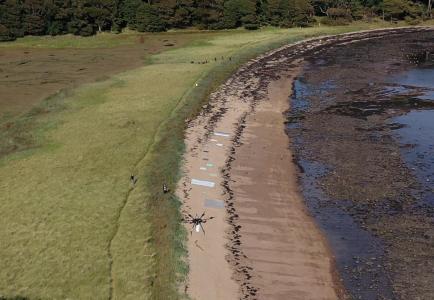Hyperdrone

Development of instruments and algorithms for remote sensing of plastics need standardised global in-situ observations. Compared to aquatic environments, dry shores are more accessible to frequent in situ observations. As part of the HyperDrone project, funded by the Discovery Element of the European Space Agency’s Basic Activities, we aimed to develop a standardised indicator for in-situ radiometric detection of plastic debris with the view to be deployed globally on different platforms. Plymouth Marine Laboratory (PML), with the support of the NERC Field Spectroscopy Facility and the Scottish Association for Marine Science (SAMS), undertook field campaigns collecting radiometric data using handheld spectrometer and hyperspectral images from sensors mounted on Remotely Piloted Aircraft Systems (RPAS). To make a robust dataset, the dataset was collected along the shore in real environmental conditions and uncertainty budgets were tailored for those acquisitions. This will in turn ensure best results for designing bespoke theoretical instruments for the remote sensing of plastics.
The data collected are made freely available in the Centre for Environmental Data Analysis Archive (CEDA Archive, UK) along with the uncertainty budgets to encourage other researchers to test their methods or design new sensors. Please find them here:
HyperDrone 2020 dataset: https://catalogue.ceda.ac.uk/uuid/2485214239134768820ffb50fb5513bc
HyperDrone 2021 dataset: https://catalogue.ceda.ac.uk/uuid/e0f6a223220d463ea7a5d2a7520000cf
